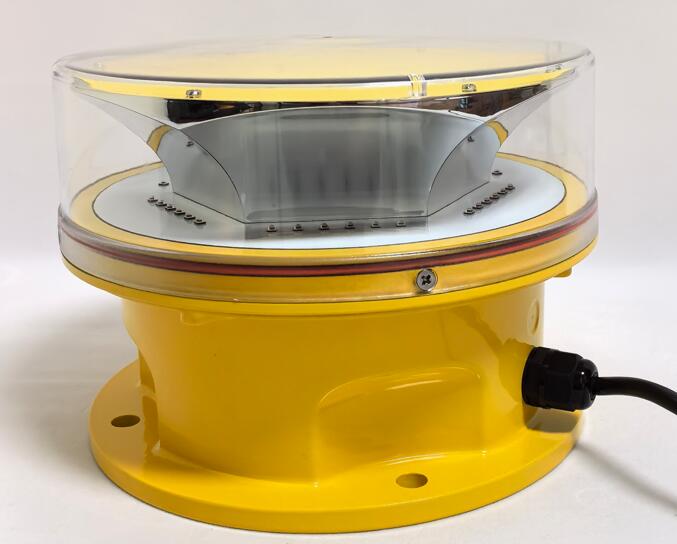Aviation Red Light: The Critical Visual Language of Flight Operations
In the meticulously regulated world of aviation, the specific application of red lighting serves purposes far beyond simple illumination. Aviation red light represents a carefully engineered solution to critical challenges in both aircraft operations and ground infrastructure, balancing human factors, technical requirements, and safety considerations in unique ways that distinguish it from other aviation lighting applications.
The use of aviation red light falls into two primary categories: preservation of night vision and standardized signaling. In cockpit environments, red lighting maintains pilot dark adaptation while providing sufficient illumination for instrument reading and chart consultation. This application leverages the human eye's relative insensitivity to red wavelengths at low light levels, preserving rod cell sensitivity while allowing adequate visual performance. The specific chromaticity coordinates for aviation red light are strictly defined by international standards to ensure consistent performance across different aircraft and equipment.

Beyond the flight deck, aviation red light serves as a universal signaling method with immediately recognizable meanings. Positioned on the left wingtip of aircraft, red navigation lights provide critical orientation information to other pilots during night operations. These lights must maintain precise intensity levels and beam distributions to ensure visibility at specified distances while preventing glare that could compromise other pilots' vision. The technical specifications for these lights encompass not only color characteristics but also failure resistance requirements that ensure continuous operation throughout flights.
| aviation red light |
Ground-based applications of aviation red light include obstruction lighting on towers, buildings, and other structures that present potential hazards to air navigation. These high-intensity systems utilize precisely defined red wavelengths that penetrate atmospheric conditions more effectively than other colors while maintaining distinct separation from other aviation lighting colors. The synchronization of flashing red obstruction lights creates distinctive patterns that alert pilots to potential dangers from significant distances, contributing essential information to situational awareness during approach and departure phases.
The technological evolution of aviation red light has progressed from incandescent filters to light-emitting diodes (LEDs) with precise spectral characteristics. Modern LED systems generate specific red wavelengths without requiring filtration, resulting in higher efficiency and more consistent color performance over time. These solid-state systems incorporate advanced optics that shape light distribution patterns to meet exacting aviation requirements while minimizing energy consumption and maintenance needs. The reliability of these systems has significantly improved safety outcomes, particularly in critical applications like obstruction lighting where failure could have severe consequences.
| aviation red lights |
Human factors research continues to influence the implementation of aviation red light in cockpit environments. Studies have refined the optimal intensity levels and color saturation that maximize instrument legibility while preserving night vision capability. Modern systems incorporate dimming controls that automatically adjust based on ambient light conditions, providing pilots with seamless transition between lighting environments. The placement of red lighting instruments follows ergonomic principles that minimize reflections and glare while ensuring adequate illumination of required surfaces.
The certification standards governing aviation red light represent some of the most stringent requirements in lighting technology. Materials must withstand extreme temperature variations, vibration profiles, and environmental conditions while maintaining precise photometric performance. Testing protocols include accelerated life cycles, spectral analysis, and performance validation under simulated operational conditions. These comprehensive requirements ensure that aviation red light systems perform reliably throughout their service life in demanding aviation environments.
Future developments in aviation red light technology focus on enhanced functionality and integration with other aircraft systems. Research into tunable lighting systems may enable dynamic adjustment of red light characteristics based on phase of flight and operational requirements. The integration of aviation red light with enhanced vision systems presents opportunities for improved human-machine interface design. Additionally, advancements in materials science may yield more efficient photonic systems that provide improved performance with reduced power requirements.
The role of aviation red light in unmanned aerial vehicle operations represents an expanding application area. As airspace becomes increasingly shared between manned and unmanned aircraft, standardized red lighting provides essential visual identification and orientation information. The development of specialized red lighting systems for UAVs considers unique factors including size constraints, power availability, and operational profiles different from traditional aviation applications.
In military aviation, specialized red lighting applications include formation lighting and covert operation capabilities. These systems require particularly precise control of intensity and distribution to maintain operational effectiveness while minimizing detection. The technical challenges in these applications have driven innovations in filtering technology and light source design that have subsequently benefited commercial aviation applications.
The maintenance and inspection protocols for aviation red light systems emphasize proactive replacement and performance verification. Regular photometric testing ensures continued compliance with regulatory requirements, while preventive maintenance schedules address known failure modes before they compromise safety. The documentation requirements for these systems create comprehensive records that support safety management systems and regulatory compliance efforts.
Aviation red light represents a sophisticated integration of human factors engineering, optical technology, and safety management that serves critical functions throughout aviation operations. The continued development of these systems reflects the aviation industry's commitment to enhancing safety through technological innovation while maintaining the standardized visual language that enables safe operations in increasingly complex airspace environments. As aviation continues to evolve, the role of aviation red light will remain essential to maintaining the safety and efficiency of global air transportation systems.
